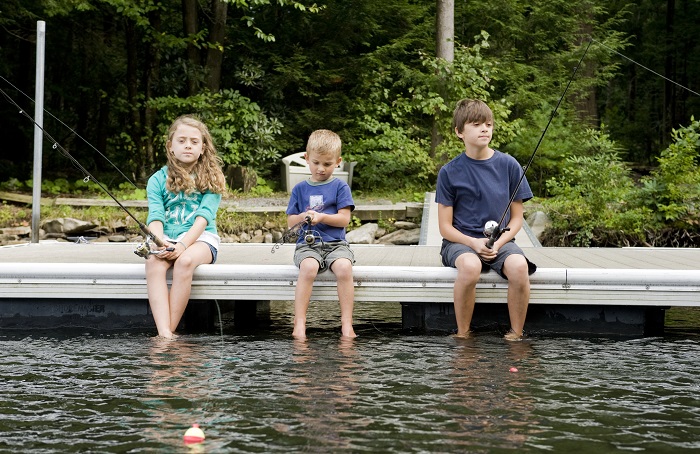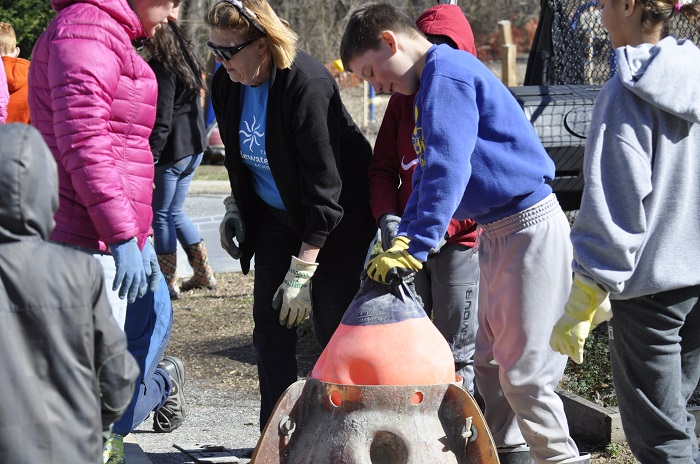
Citizen Science and Maryland Fishing
“Citizen science? Not for me. I just want to go fishing.”
That’s an understandable reaction. Sometimes all of us want just to kick back and relax on the water. But most of us anglers also want to learn to “think like a fish,” to hone our skills and catch more, even if we plan on releasing some of that catch. It turns out that the more we learn about ecology in our favorite waters, the more success we’re likely to have. Ever wonder where to find restoration oyster reefs with the kind of “live bottom” that draws in white perch, spot, croakers and maybe channel catfish? How about underwater grass beds where speckled trout and rockfish prowl? Or good ways to catch bait? Ever wonder why rockfish suspend up in the water column instead of on the bottom? The bay’s scientific community can answer a lot of those questions, in non-technical language. The more you learn, the better you can fish.

Learning can breed fascination and curiosity that leads to more learning. It can even foster a desire to give something back to the resource: the creeks, rivers and bay we love. Watch out – this progression can turn into a very slippery slope, but it’ll make you smile.
In the age of the internet and smartphone apps, Maryland offers recreational anglers a lot of opportunities to practice citizen science that leads to both better fishing and valuable contributions to our understanding of its waters. Here are several:
Eyes on the Bay: Click Before You Cast
First, get comfortable with the learning process. The Maryland Department of Natural Resources has for years included on its web site a section, Eyes on the Bay, that offers current water quality conditions at about a hundred sites around the Chesapeake and its rivers, including the Potomac. Several years ago, a fish-obsessed member of the Eyes on the Bay team developed a special resource within that site. Click on Fishing in the top banner and you’ll find Click Before You Cast, a step-by-step guide to thinking like your favorite fish, analyzing both where and how to pursue them. Each step offers online resources to answer your questions, for example, maps with current salinity, oxygen and temperature conditions.

Here’s the sequence:
- Think like a fish: Understand water conditions and habitat areas your target fish prefers.
- Eliminate areas outside preferred salinity range.
- Eliminate poorly oxygenated areas.
- Eliminate areas outside of your target’s preferred temperature range.
- In the remaining area, identify preferred habitat (including areas in MARI, the Maryland Artificial Reef Initiative).
- Find moving water.
- Go fishing and catch fish!
Some of these steps come naturally to long-time anglers, but they offer valuable insight to those with less experience, and all of us can benefit from up-to-date information on water conditions.
Volunteer Angler Survey
For starters on contributing your observations, sign up for the department’s Volunteer Angler Survey, which includes categories for rockfish (striped bass), blue crabs, shad, and MARI reefs, plus several more for freshwater fish. You can log your catches via phone apps, and the department offers prizes for participating anglers. Meanwhile, the catch records provide valuable information to the department’s scientists. If you happen to catch a fish carrying a tag, be sure to report it. Tags provide valuable information on fish movement, habitat, and rates of growth. The Tag Return Program site will give you information on species and how to report.

While you’re at it, record your catches on the department’s Angler’s Log. The Maryland Angler’s Log is not only a fun online resource where anglers have a chance to show off their recent catches but department biologists routinely check out the submissions to monitor what species are being caught and where.
Tagging Fish with Coastal Conservation Association Maryland
Last year, the Coastal Conservation Association/MD began participating in the long-running citizen tagging program of the American Littoral Society. Tagging fish can be a lot of fun, especially when the fish get re-caught and you find out where they have traveled and how much they have grown. The information is seriously valuable to fishery managers too. But joining the program brings responsibility to make sure tagged fish go on their way healthy. It puts a premium on careful handling and tagging technique, so the Coastal Conservation Association Maryland requires participants to attend a training session beforehand that also includes good information on catch-and-release best practices. Surprisingly, you’ll also find that many of these practices help you catch more fish and save time handling them.
Oyster Reef Restoration

Coastal Conservation Association Maryland also participates in oyster reef restoration, along with partners in the Chesapeake Oyster Alliance, including the Chesapeake Bay Foundation and the departments’ Marylanders Grow Oysters. There are lots of ways to participate; school groups to volunteer organizations have gotten their hands dirty helping build concrete reef balls. While Maryland waterfront property owners can volunteer to help grow baby oysters also known as spat from their docks. In less than a year they will be ready for planting on three-dimensional, sanctuary restoration reefs. And guess what? If you participate, you’ll have a front-row seat to the location of those reefs and their considerable fish-catching potential. What’s not to like here?
Underwater Grasses Survey
Grass is grass, right? Actually no, the Chesapeake is host to multiple species of these complex underwater flowering plants that play such key roles in the lives of blue crabs, grass shrimp, juvenile fish and many other critters, which is why game fish like rock, speckled trout and young red drum like to hang around them. Want to learn more about these plants, the rich underwater meadows they create and most important, the locations of the beds? Check out these resources on the department’s website and the Virginia Institute of Marine Science, which coordinates the annual survey of bay grasses. Even better, want to help monitor grass beds this summer? There’s no better way to learn your way around them. Several bay-related non-profits offer volunteer opportunities:
Citizen science? It’s not as intimidating as you expected, is it? Find the right program for your waters and you’ll learn a lot that will make you a better angler, while you give something back to the Chesapeake waterways you love. Good luck!
Ready to start planning your fishing trip in Maryland? Be sure to visit Maryland Department of Natural Resources online for information on fishing licenses and regulations. Also, check out the Plan Your Trip section of our website to find lodging options, fishing charters and guides, and outdoor retailers to get the most out of your fishing trip in Maryland.
If you’re looking to turn your fishing trip into a road trip, there’s no better way to experience the beauty of Maryland than travelling its scenic byways.
This post was written by John Page Williams